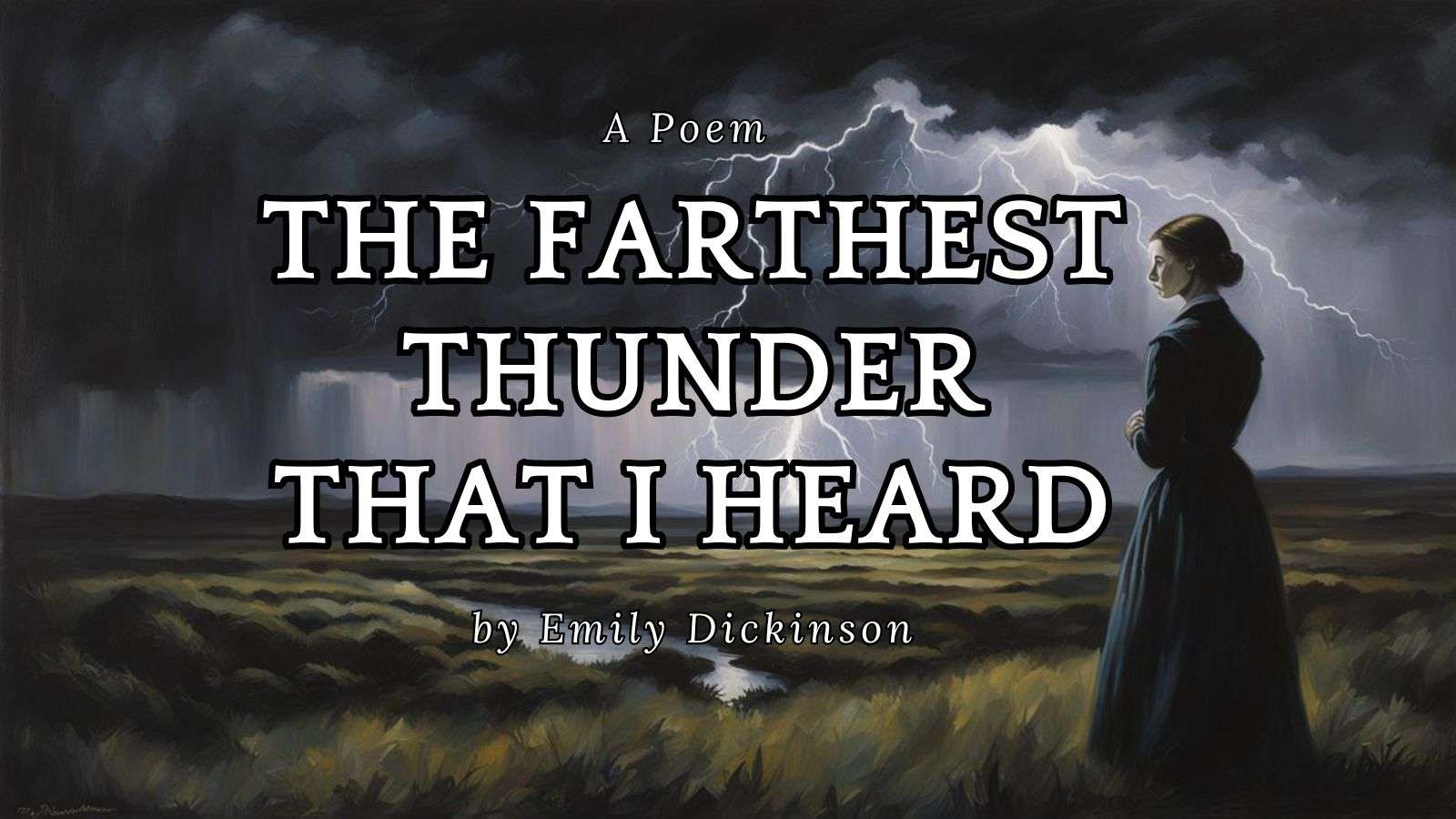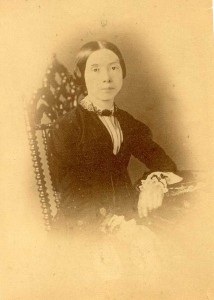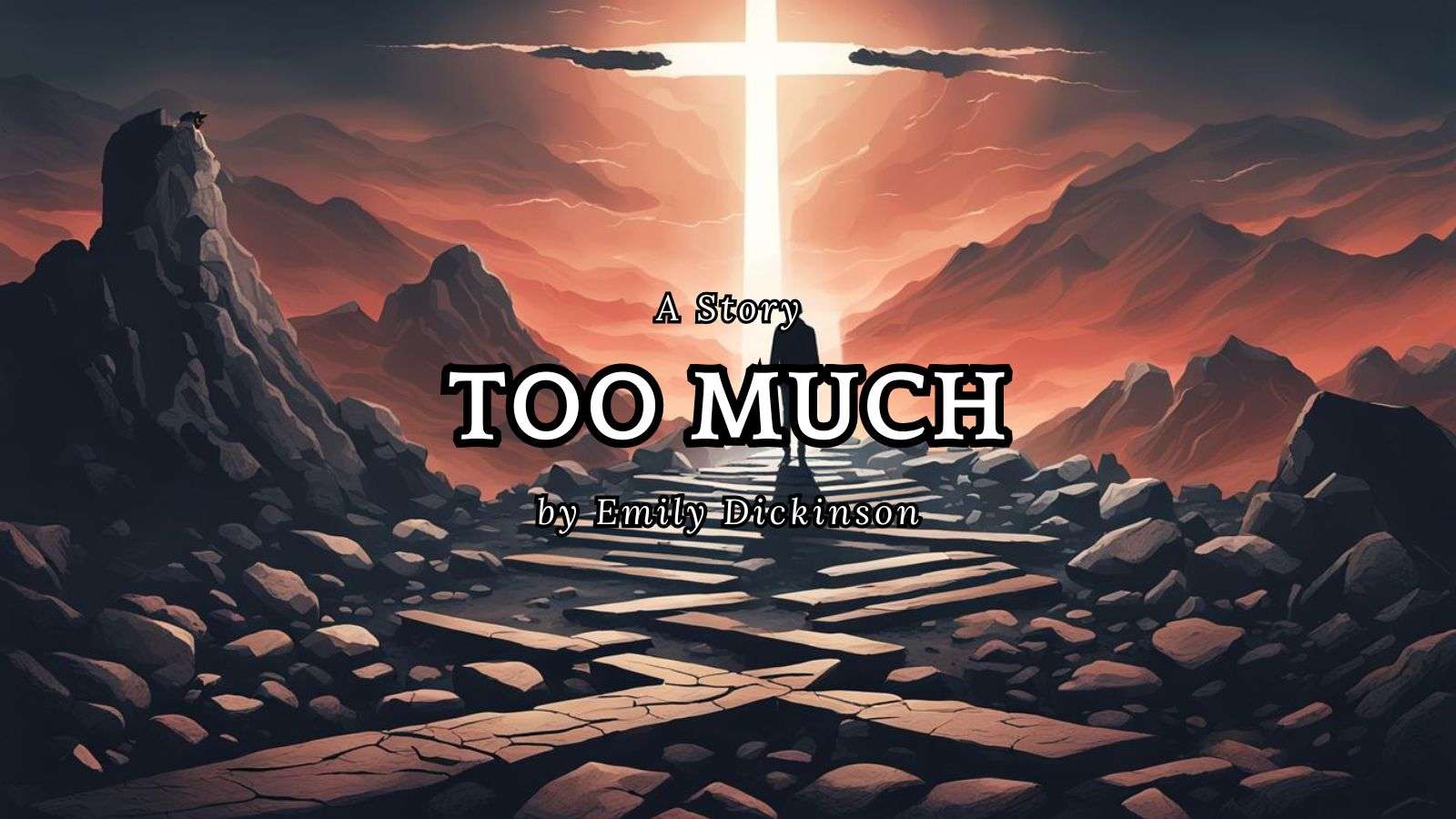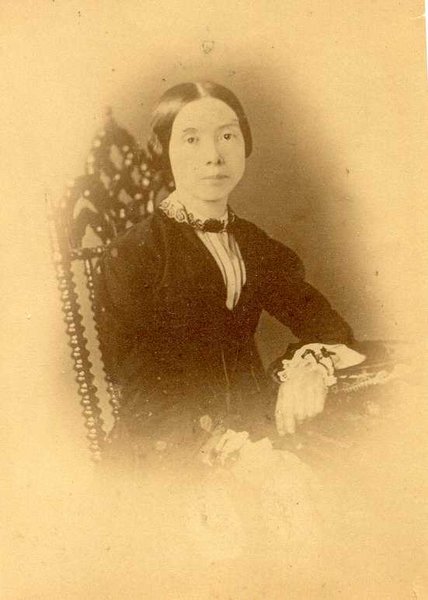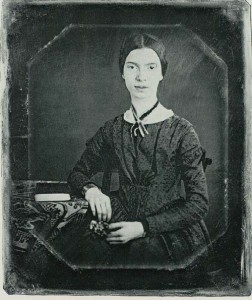The farthest thunder that I heard XXVI
by Emily Dickinson
The farthest thunder that I heard
Was nearer than the sky,
And rumbles still, though torrid noons
Have lain their missiles by.
The lightning that preceded it
Struck no one but myself,
But I would not exchange the bolt
For all the rest of life.
Indebtedness to oxygen
The chemist may repay,
But not the obligation
To electricity.
It founds the homes and decks the days,
And every clamor bright
Is but the gleam concomitant
Of that waylaying light.
The thought is quiet as a flake, —
A crash without a sound;
How life’s reverberation
Its explanation found!
Analysis
Central Metaphor:
The lightning bolt serves as a metaphor for those sudden, unexpected moments that profoundly impact and alter one’s life. The reference to being personally “struck” hints at pivotal moments – falling in love, experiencing loss and grief, achieving a long-held dream. The poem suggests these moments reverberate through the rest of one’s life.
Tone:
While the tone contains awe, there is also intimacy in the speaker’s personal confrontation with the lightning. This mirrors the intimacy of experiencing a life-defining moment. There is also nostalgia in “rumble still,” hinting at remembering a pivotal instant years later.
Theme:
The transformative power of sudden moments is the overarching theme connecting the poem to the human experience. Additional themes that relate to life include the foundational role certain experiences play in constructing our lives and identities, and the ripple effects from impactful events.
Imagery:
The imagery of a lightning strike parallels the imagery one might use to describe a life-altering event – being “struck” by something with force, being rattled, having your whole world illuminated. The “clangor” and “gleam” suggest the noise and brightness of pivotal moments. Thunder echoing for years mirrors the longevity of these moments.
Overall Message:
The poem is emphasizing how brief, potent moments can define our existence – striking quickly yet impacting all the days that follow. Like lightning, these experiences are central to human life and development. The poem is a tribute to these flashes that explanations and words fail to capture fully.
Guided Questions for The farthest thunder that I heard XXVI by Emily Dickinson
- How does the imagery of lightning work as a metaphor for a sudden life-changing experience? What parallels can be drawn?
- The speaker says the lightning “founds the homes and decks the days.” What does this suggest about the importance of pivotal moments in our lives?
- The reverberation of the lightning is compared to “life’s reverberation.” What do you think the poem is saying about how impactful experiences continue to affect us long after they’re over?
- The speaker says “I would not exchange the bolt / For all the rest of life.” What does this convey about the transformative power of lightning/pivotal moments?
- The last two lines say these moments provide “explanations” for our lives. What explanation do you think is being referred to here?
- The last line describes lightning as a “crash without a sound.” Why do you think the poet chose to describe this destructive force in this unusual way? What meaning are they trying to convey?
Let me know if you need any clarification or have additional questions! Analyzing poetry more deeply often requires slow, thoughtful reflection and discussion.
Biography
Emily Dickinson (1830-1886) was one of the most famous and influential American poets. She led a very private life, rarely leaving her hometown of Amherst, Massachusetts, where she pursued her passion for writing poems that broke conventional rules of style and theme.
Though she wrote nearly 1800 poems, less than a dozen were published during her lifetime. She was known for being reclusive and eccentric, interacting largely through letters. Her poems reflect deep insights into death, religion, nature, love and other weighty topics.
After Dickinson died, her sister discovered the enormous collection of unpublished poems and and wanted them published.. Emily Dickinson garnered recognition for her innovatively sparse, untitled form as well as her symbolic richness and bold questioning of core beliefs and doctrines. Her body of work became very influential for modernist and contemporary poets.
Today, Emily Dickinson is considered one of the towering figures of American literature. Though she never formally studied poetry and had little exposure to literary society, she is now studied globally and continues to inspire writers with the intensity and enigmatic beauty of her small yet profound poems.
